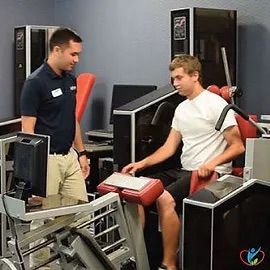Everybody knows in order to stay healthy it's imperative that you are able to stay active. Spinal disorders are the most frequent cause of activity limitation among people below the age of 45. The rate of doctor visits caused by low back pain (LBP) is second to only cardiovascular problems among chronic disorders.
HOW TO COMBAT LOW BACK PAIN
Low back pain is 5th amongst the most frequent reasons for hospitalizations and 3rd highest as a reason for a surgical procedure. About 1 in 3 people who have low back pain will be pain free within 1 week regardless of the type of intervention, including no intervention at all. By 3 weeks 75% will fully recover and by 2 months 90% will recover. For these reasons the focus on treatment of acute low back pain is to try and rule out a serious underlying condition and to help the patient improve activity tolerance while their low back recovers naturally.
Exercise conditioning is important in standard cardiovascular and general orthopedic rehabilitation. Control of pain and inflammation. Early mobilization, and prescribed exercises with a progression in intensity is the standard course of treatment because it has the best chance to restore normal function. What about for low back rehabilitation? Despite the magnitude of its medical impact as described there is no consensus as to the most effective treatment for low back pain. Despite the common path of rehabilitation described above for most cardiovascular and orthopedic injuries there remains some doubt as to the value of exercise when applied to low back disorders.
Despite the numerous number of conservative care treatments available to the low back pain patients, few have actually been properly studied through scientific investigation. Treatments that have become the standard include bed rest, passive therapy such as massage, hot packs, cold packs, electrical stimulation, stretching, and pain clinics. The common denominator among these treatments is that they are passive in nature so the do not elicit healing through any physiological adaptation. While they may help with acute pain these passive therapies simply add unnecessary treatment costs and little proven value beyond 6 weeks after a soft tissue injury.
2x Per Week for 30 minutes. Seriously, That's it!
The fact that many low back pain patients have participated in exercise programs at one time or another in the past without significant pain relief may lead some clinicians to question the value of its treatment. It is important however to note the difference between movement and meaningful exercise. Conditioning occurs only with the controlled application of progressive and intensive overload. Calisthenics that move the spine are commonly prescribed for low back pain but they lack the necessary requirements that facilitate adaptive responses to the low back tissue.
Researchers have shown that the lumbar extensor muscles have a very large potential for strength improvement when isolated through pelvic stabilization and exercised with a low training volume (one set of 6-15 repetitions). The gold standard machine to exercise the low back musculature is with a meds medical lumbar extension machine (pictured below). Research has shown using this machine as little as once per week doing 6-15 repetitions has been shown to effectively strengthen the low back musculature enough to completely reverse the effects of low back pain. Exercises such as superman hold and roman chair back extension have been shown to be effective in the prevention and rehabilitation of low back pain.

Chronic low back pain is a difficult and costly problem to address. In the early 20th century passive modalities which redirect patient care towards symptom relief have been popularized. Unfortunately, these modalities have no been shown in the scientific community to prevent future bouts of low back pain. Research in the last 10 years has shown that proper strength training as little as once a week has been shown to prevent the occurrence of low back pain as well as reverse the effects of low back pain. Isolated lumbar extension resistance training significantly improves lumbar strength and bone mineral density with minimal training volume of one set of 6-15 repetitions performed to muscle fatigue one time per week. People with low back pain who engage in low back strengthening can expect significant improvements in muscular strength, endurance, and joint mobility, as well as pain relief.
If you are experiencing low back pain the best thing you can do is seek out an exercise professional who has experience in strengthening the low back musculature. I encourage you to schedule a FREE introductory workout with Reformed Fitness today so that you can start rehabilitation through the use of evidence based exercise!
